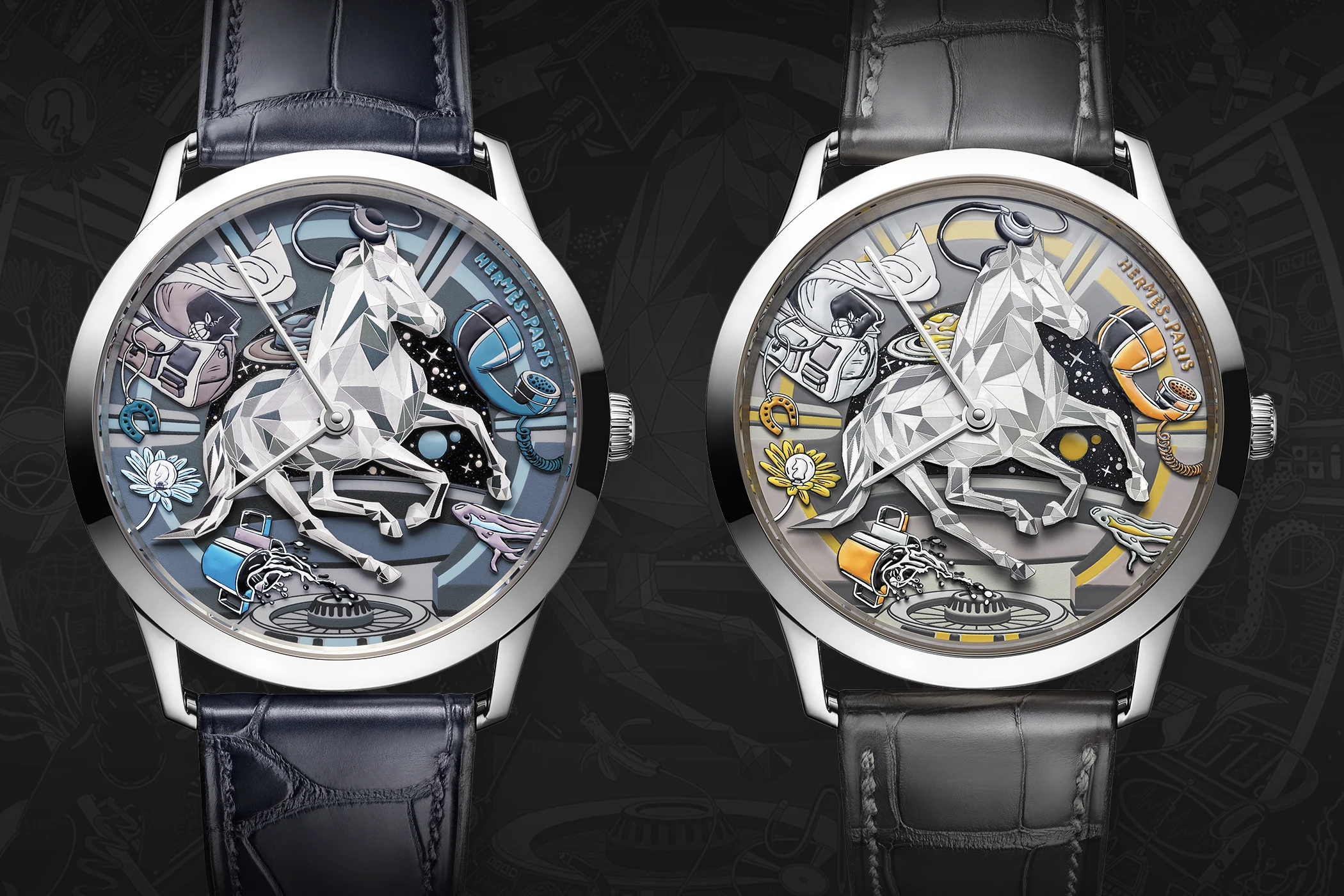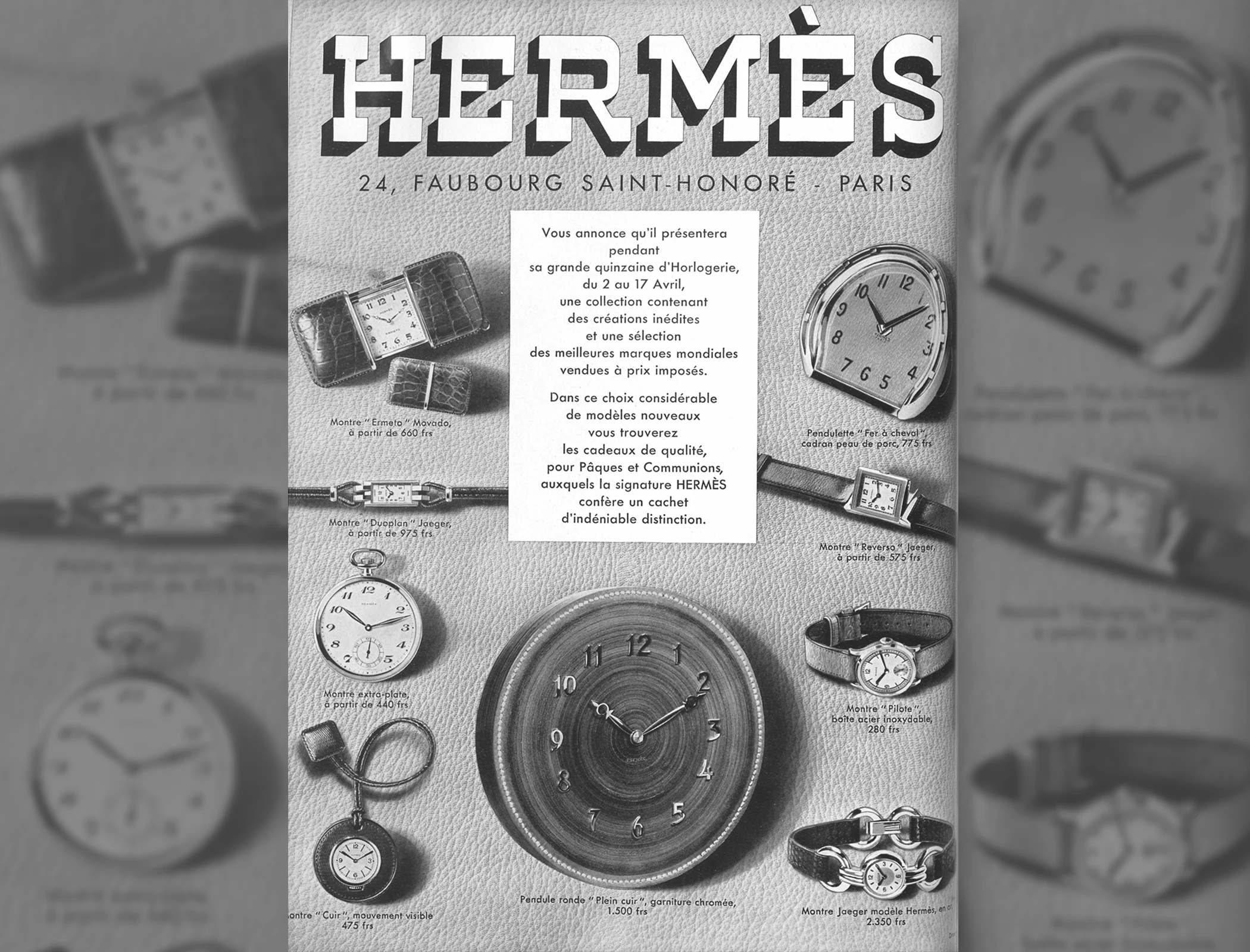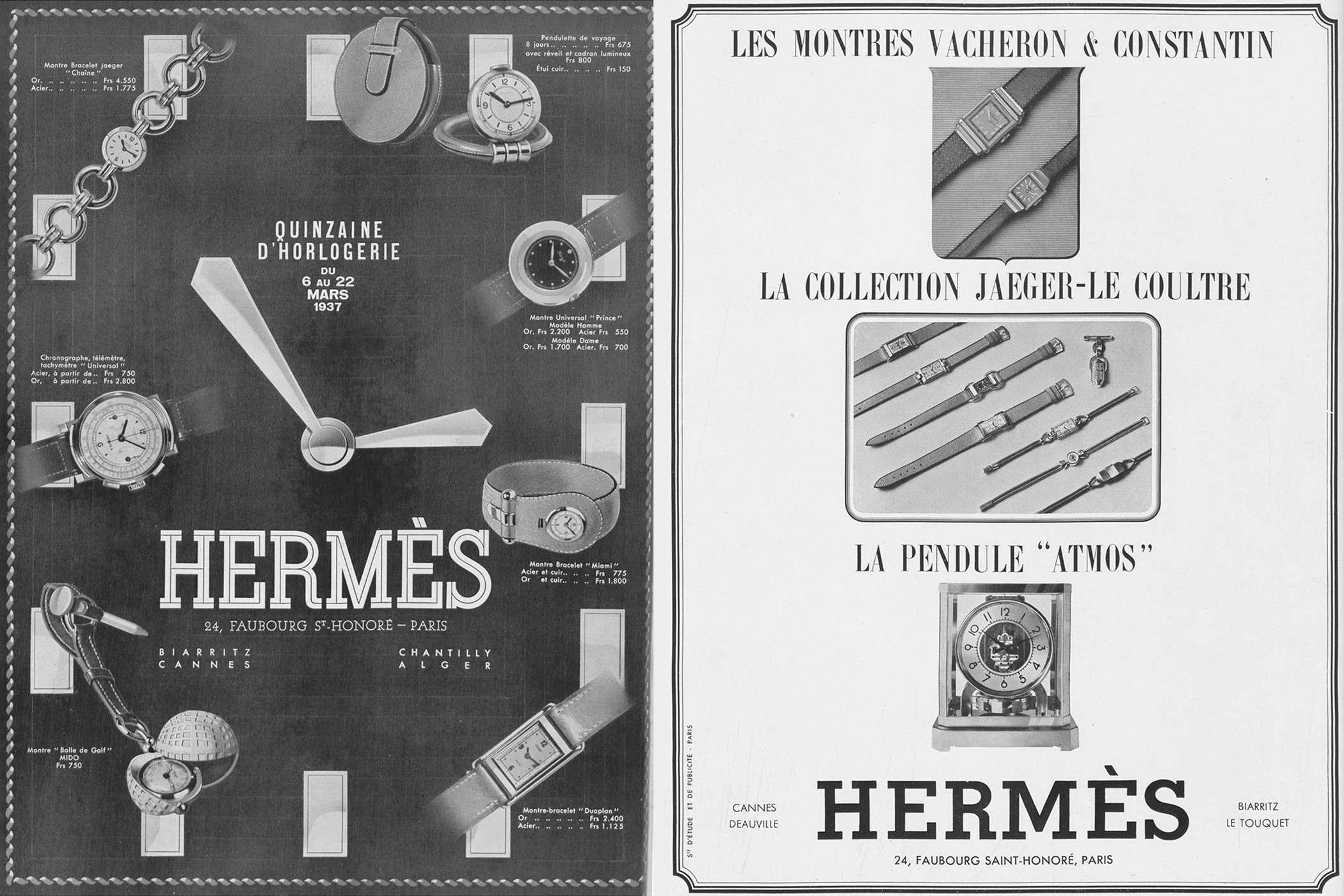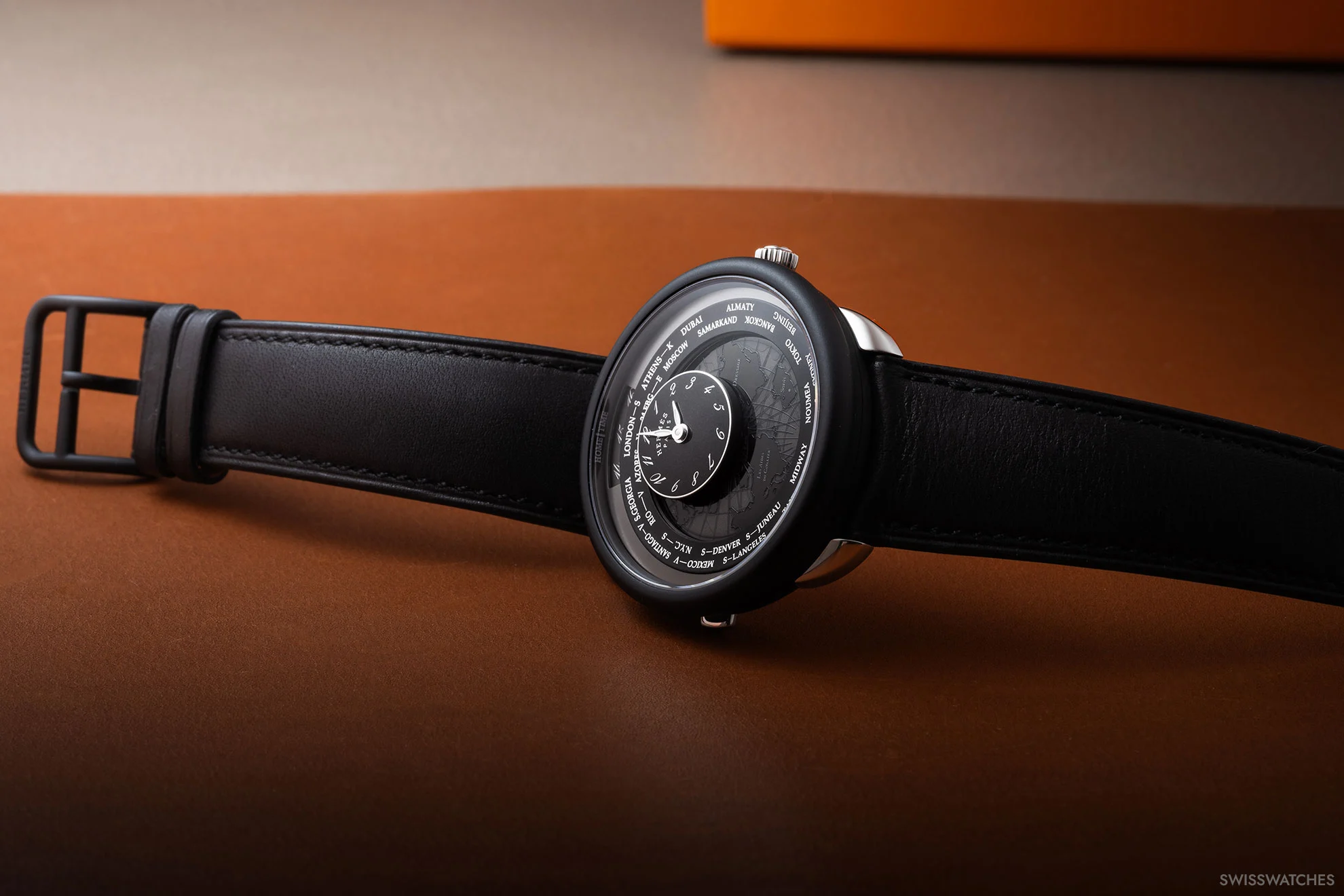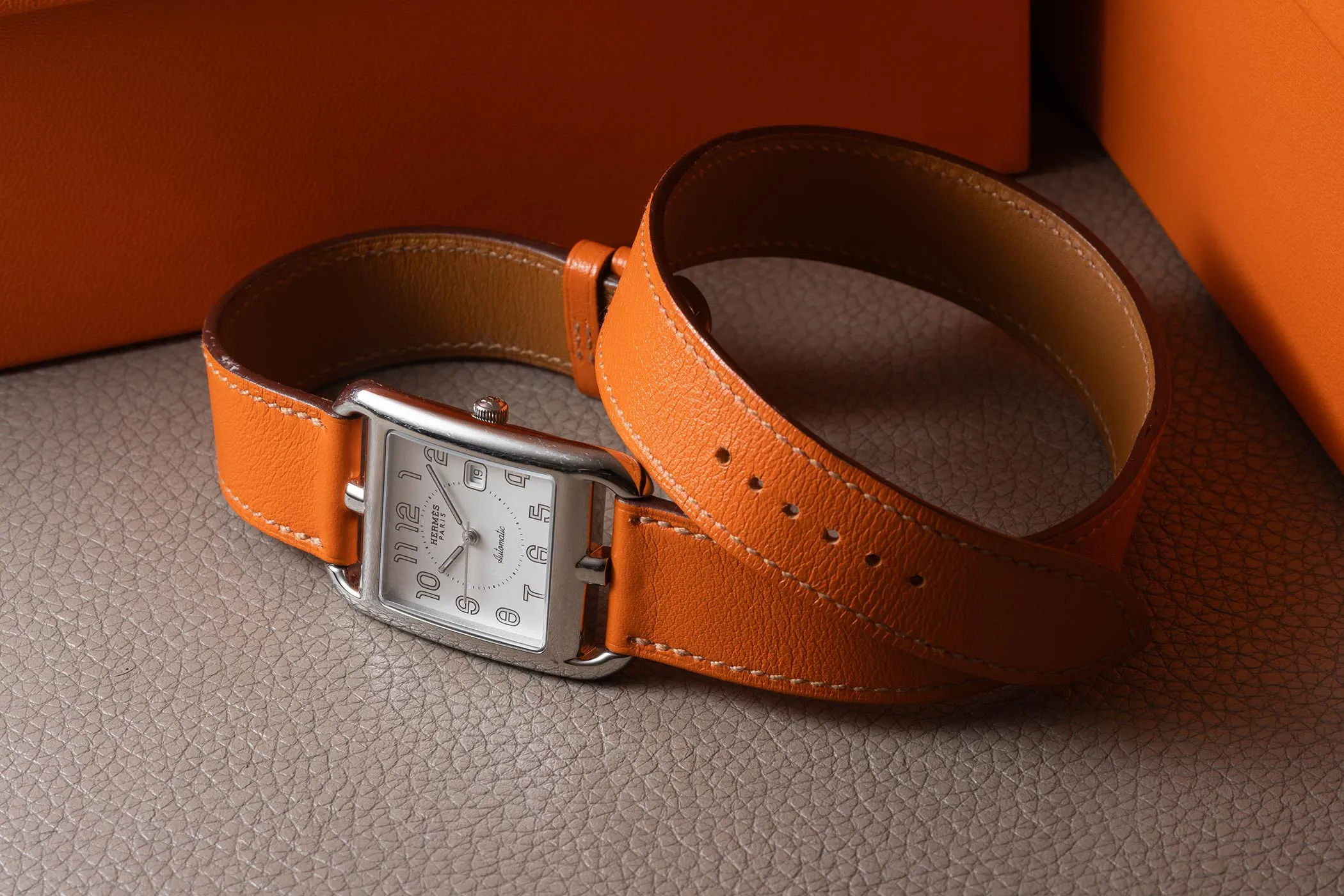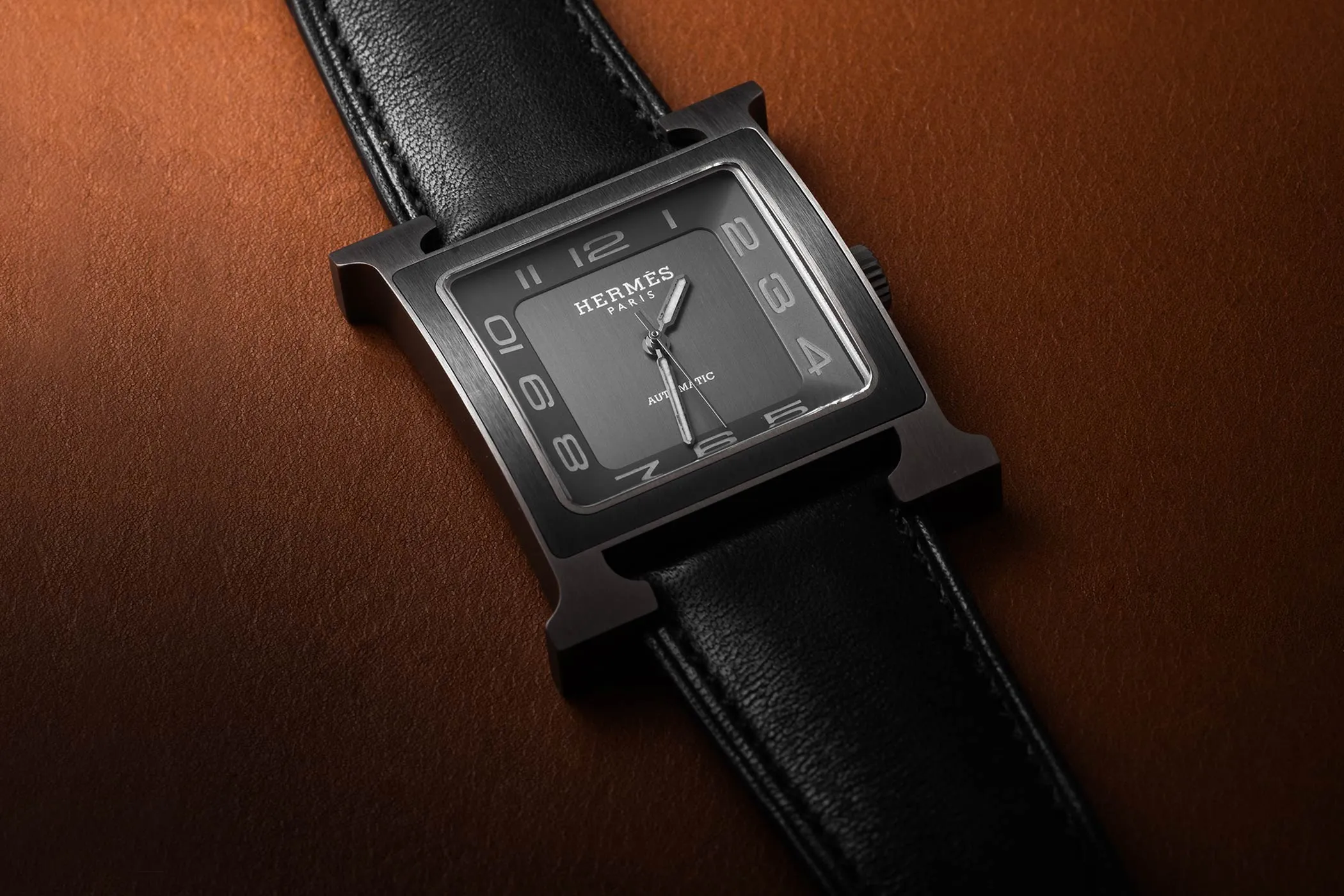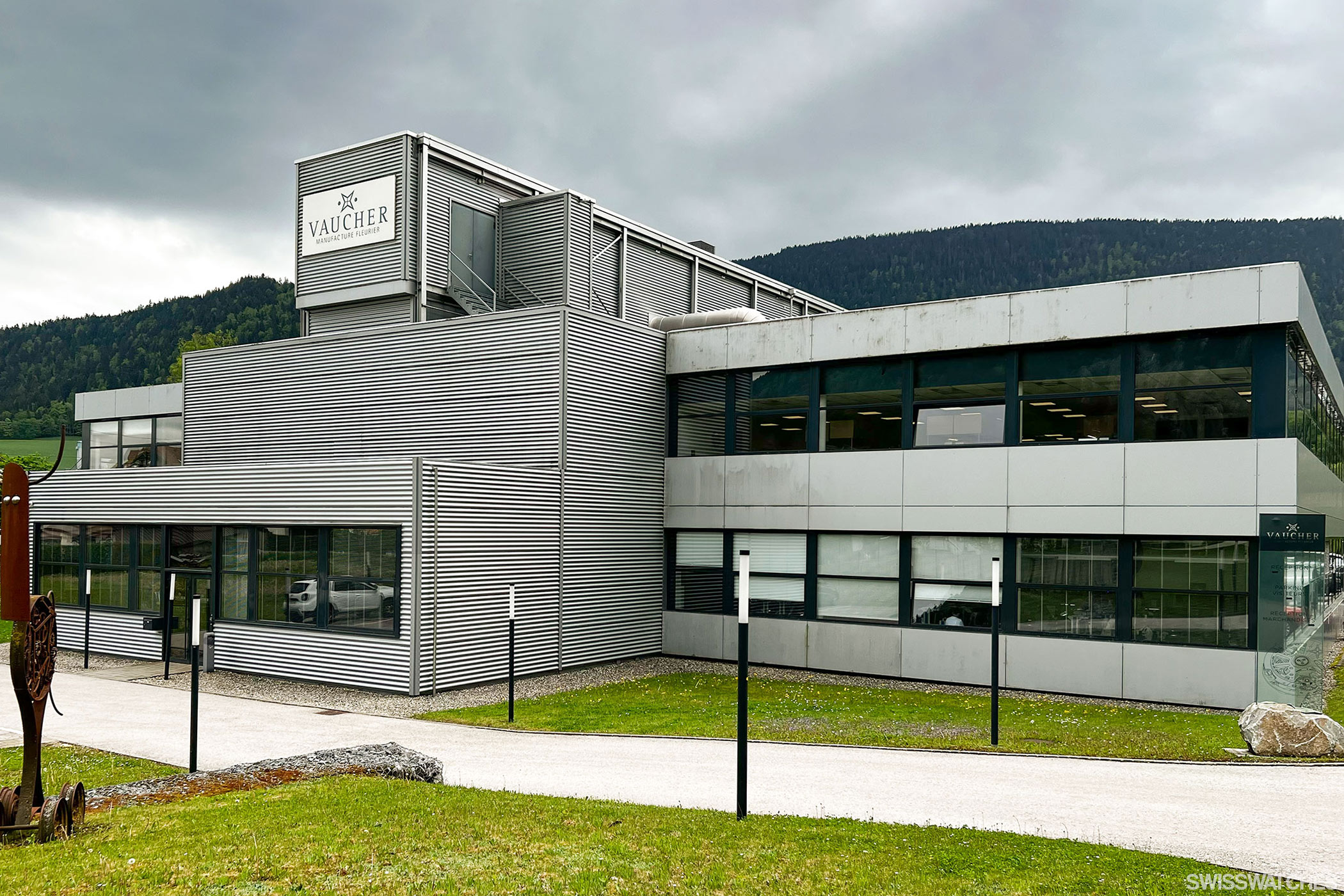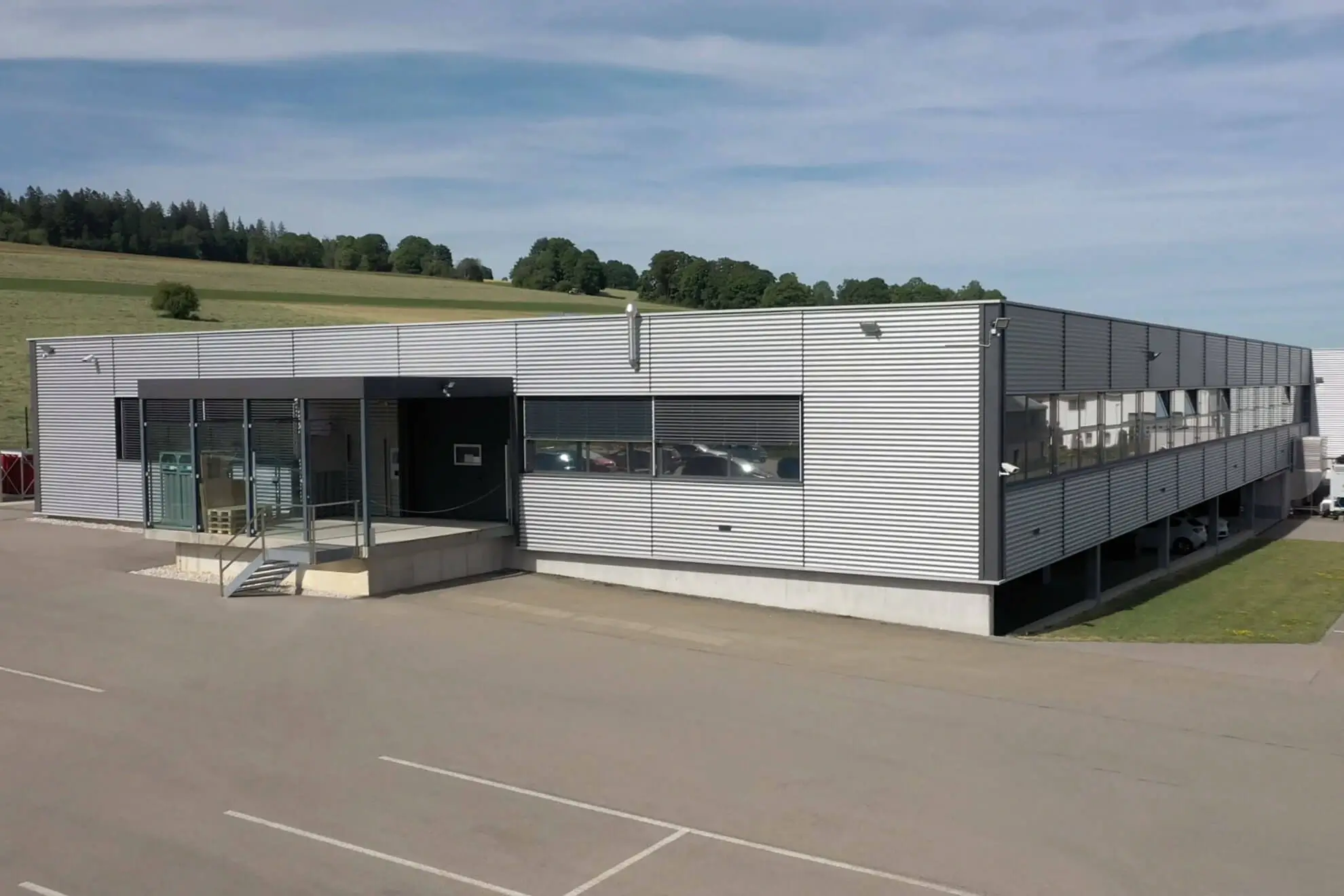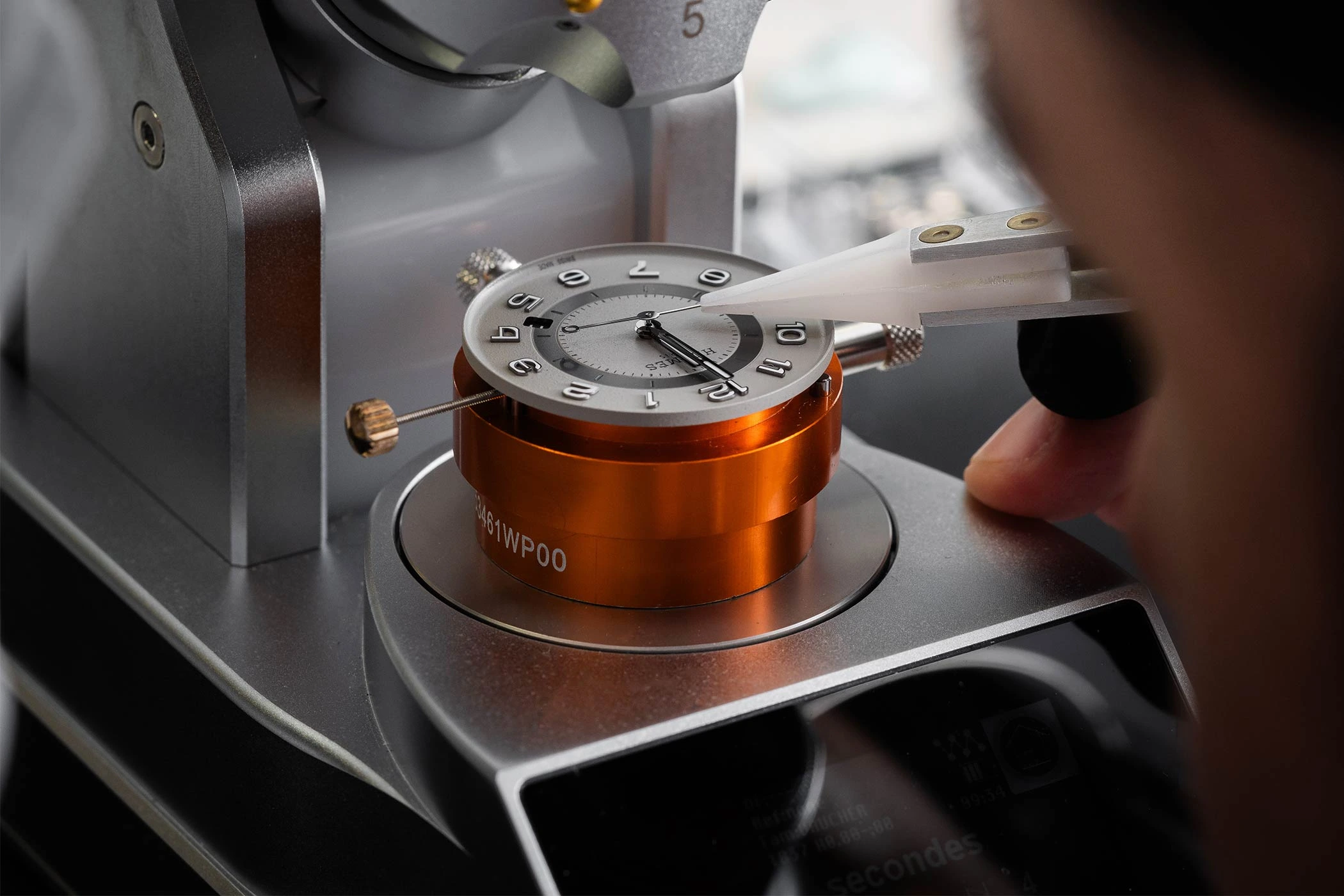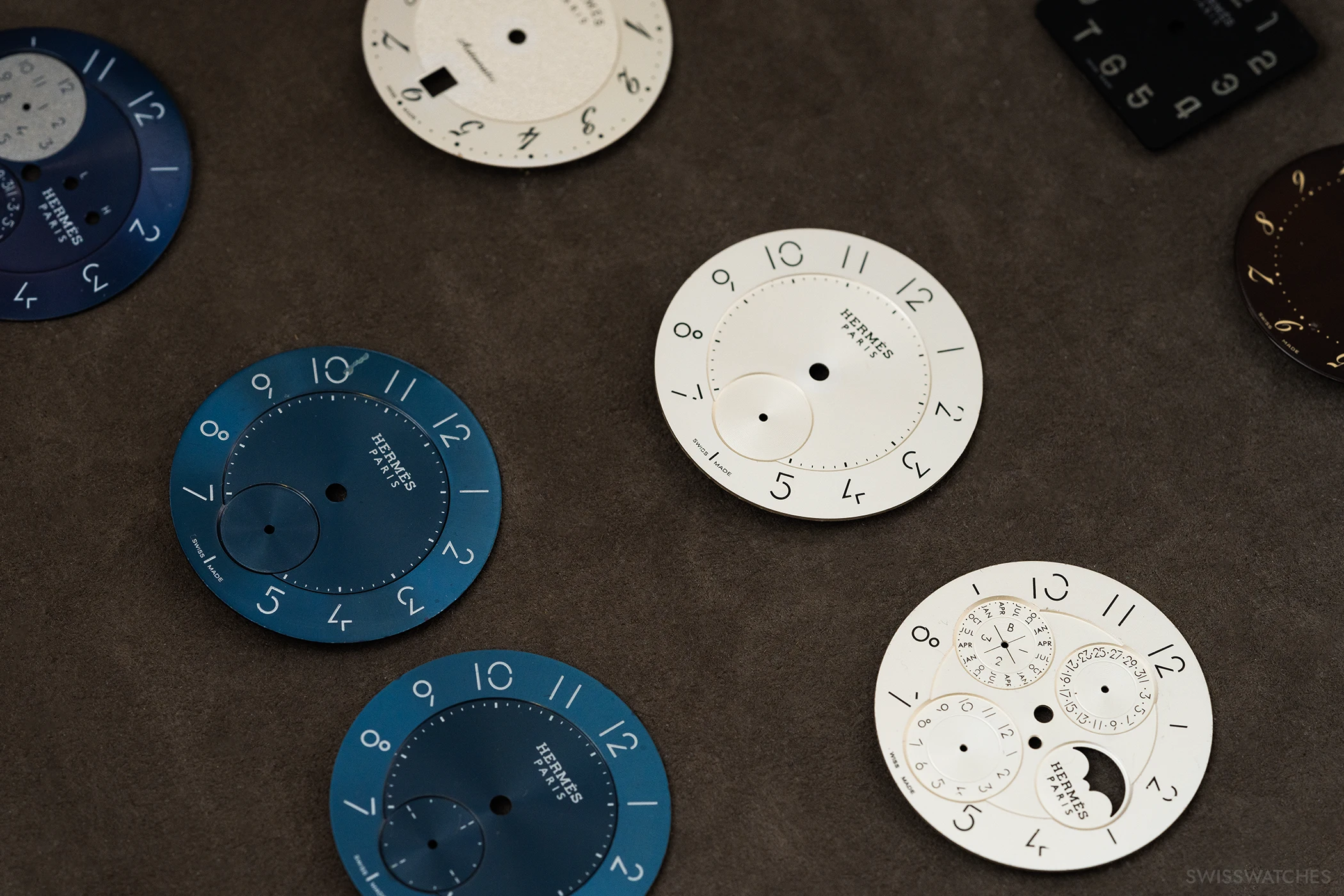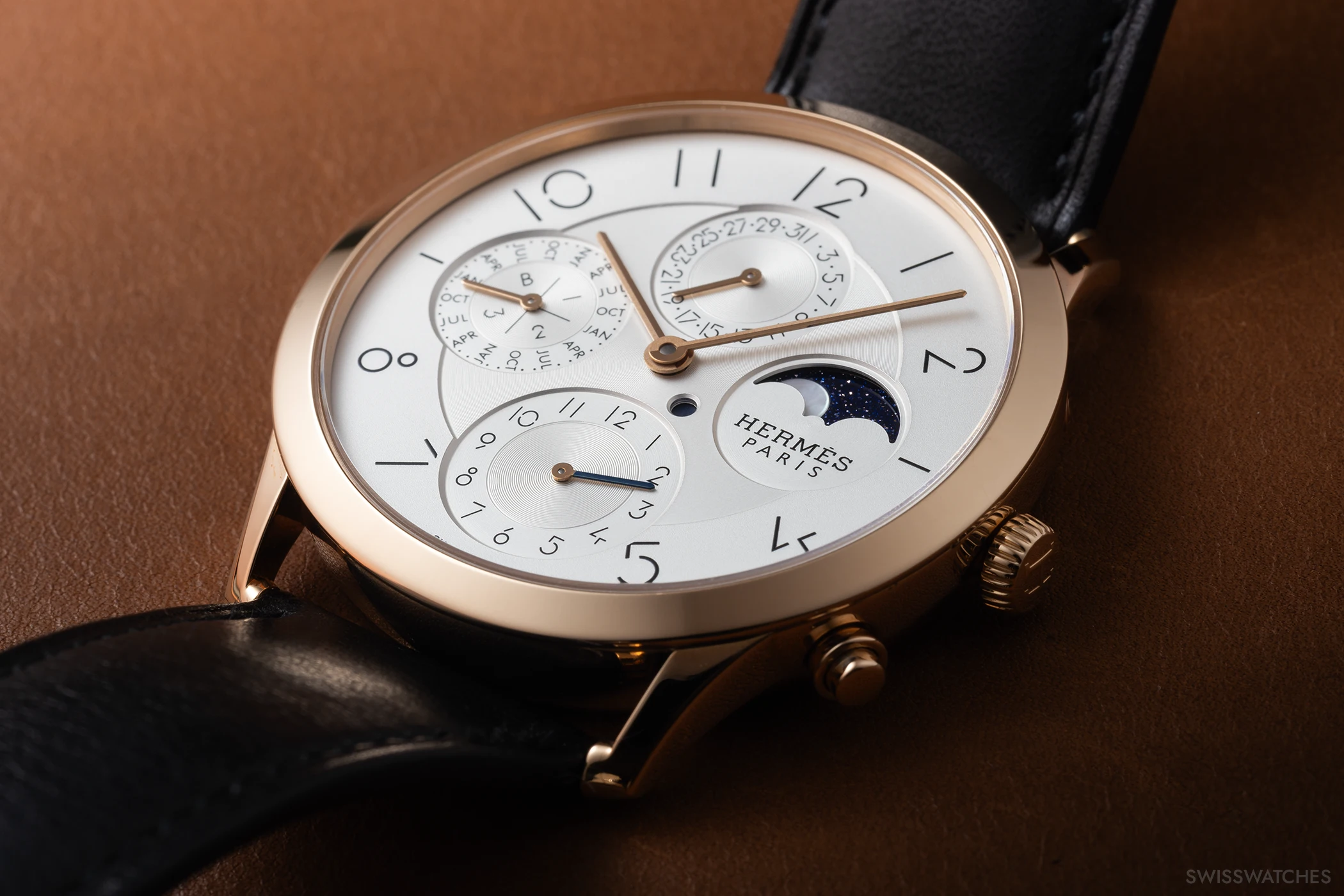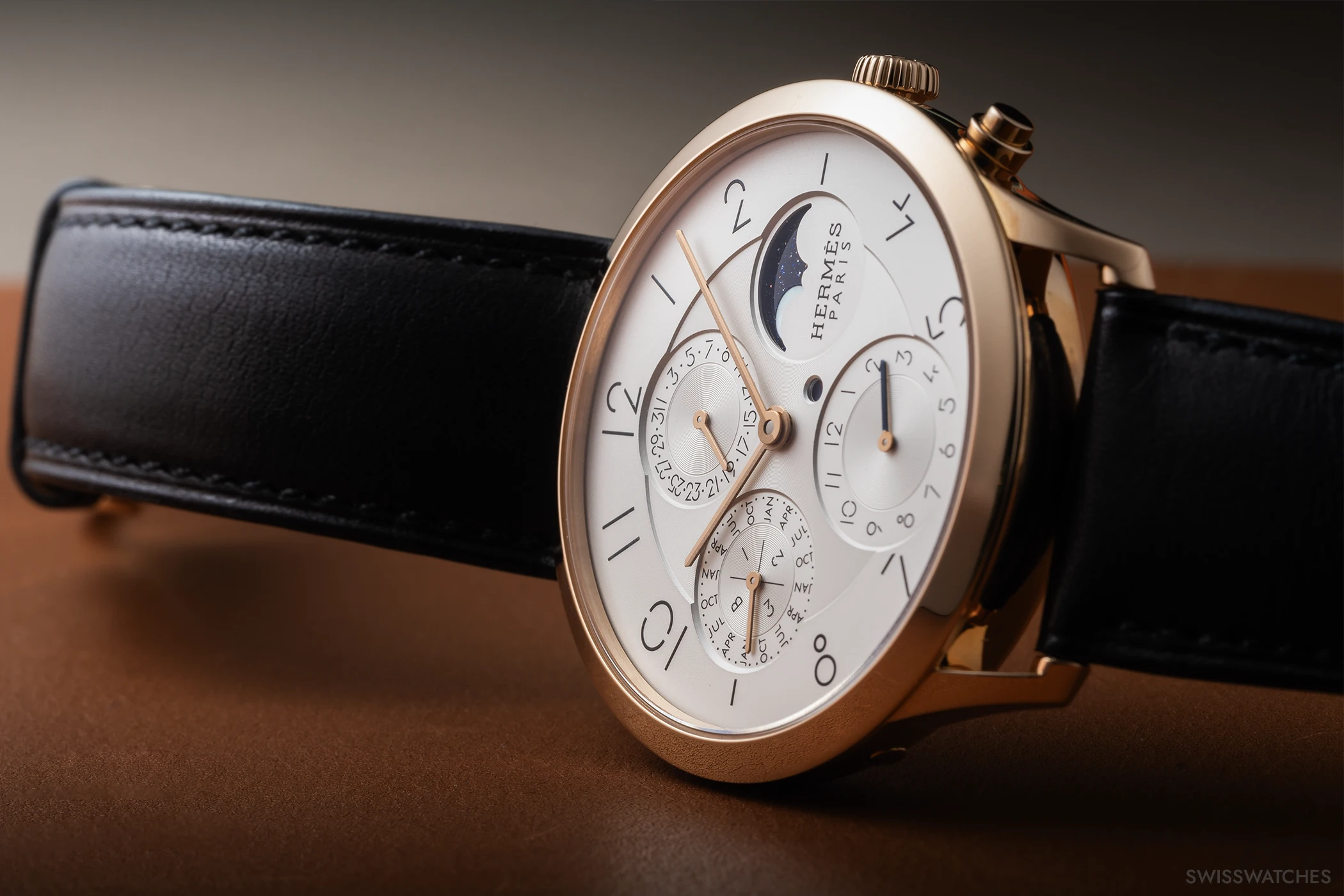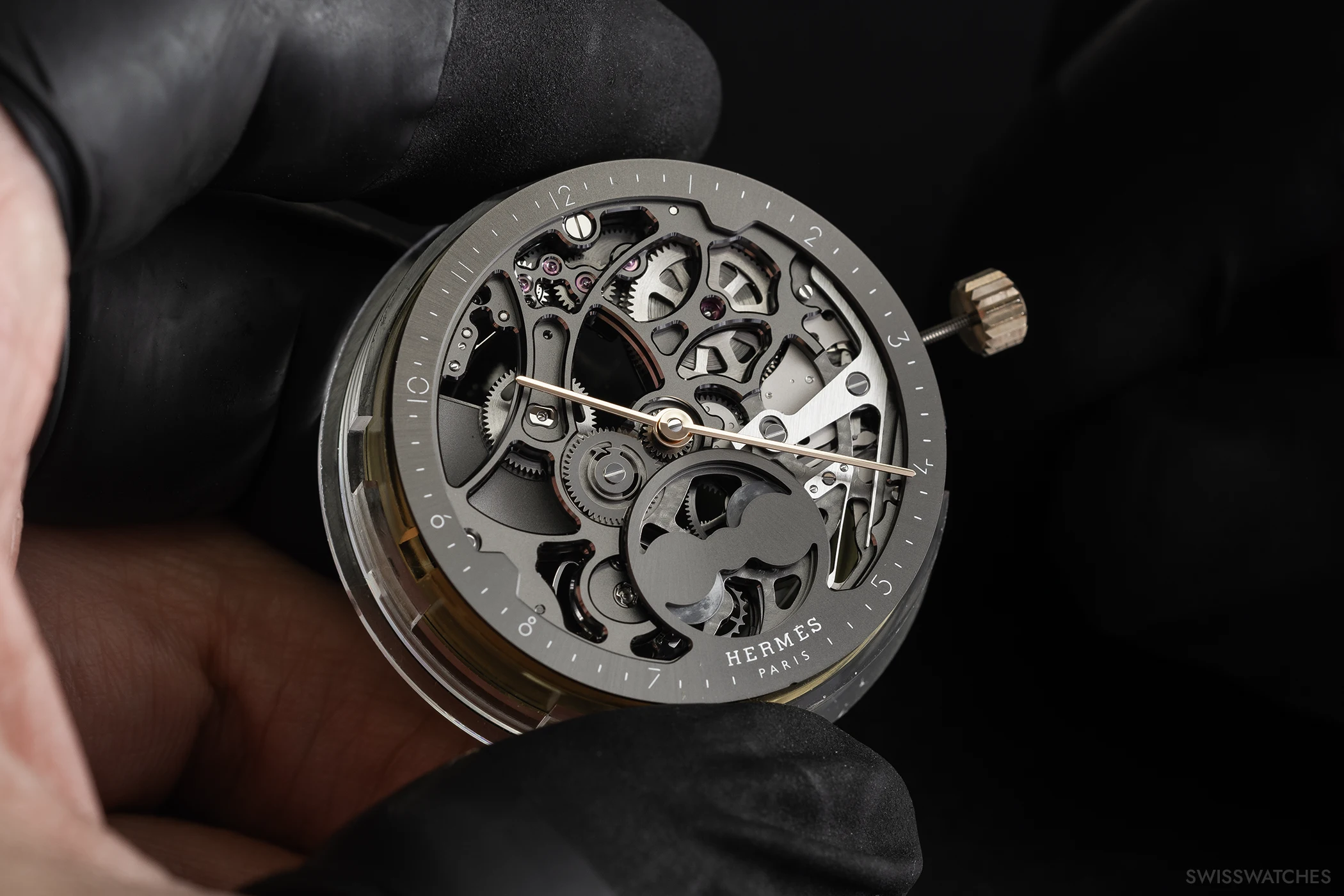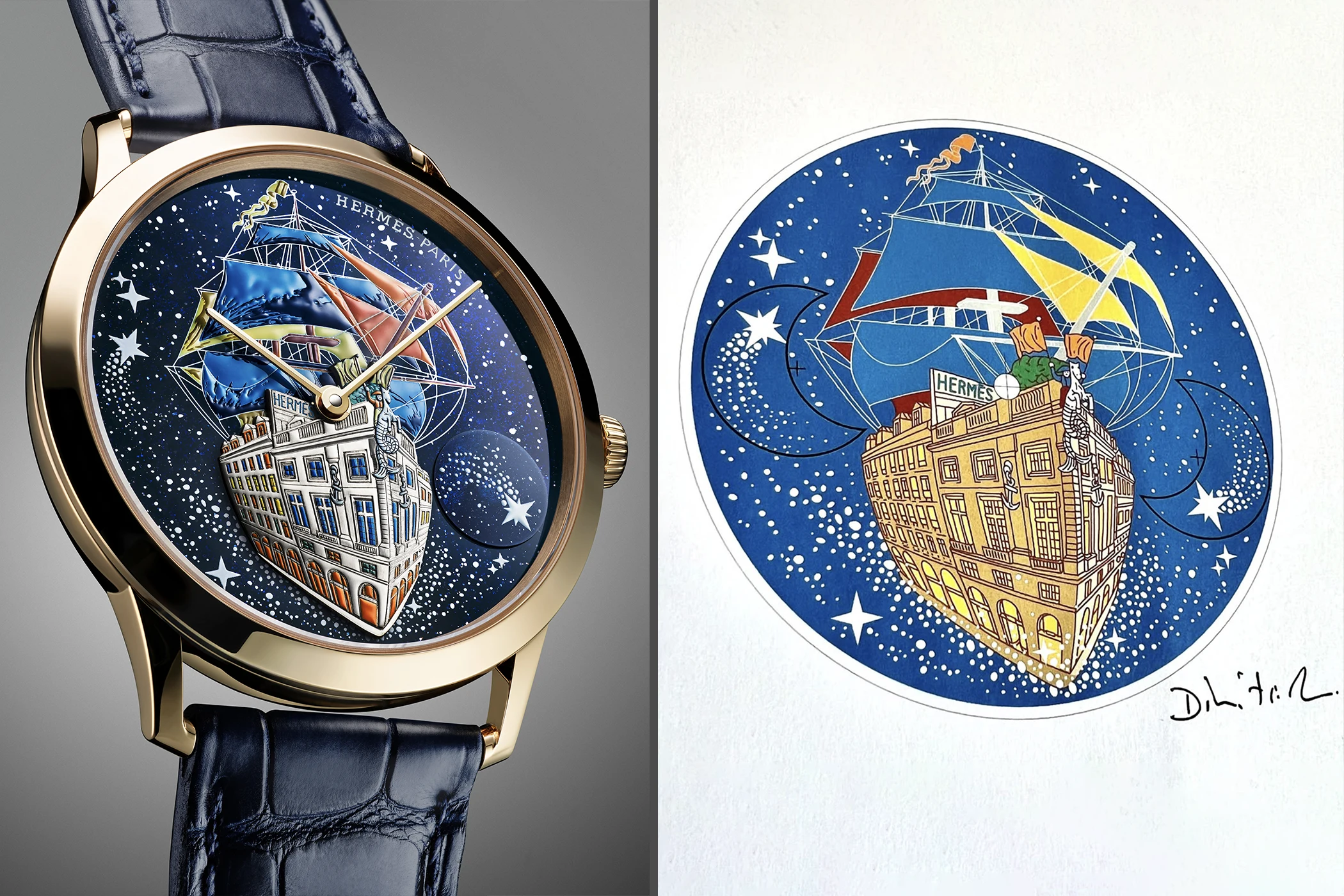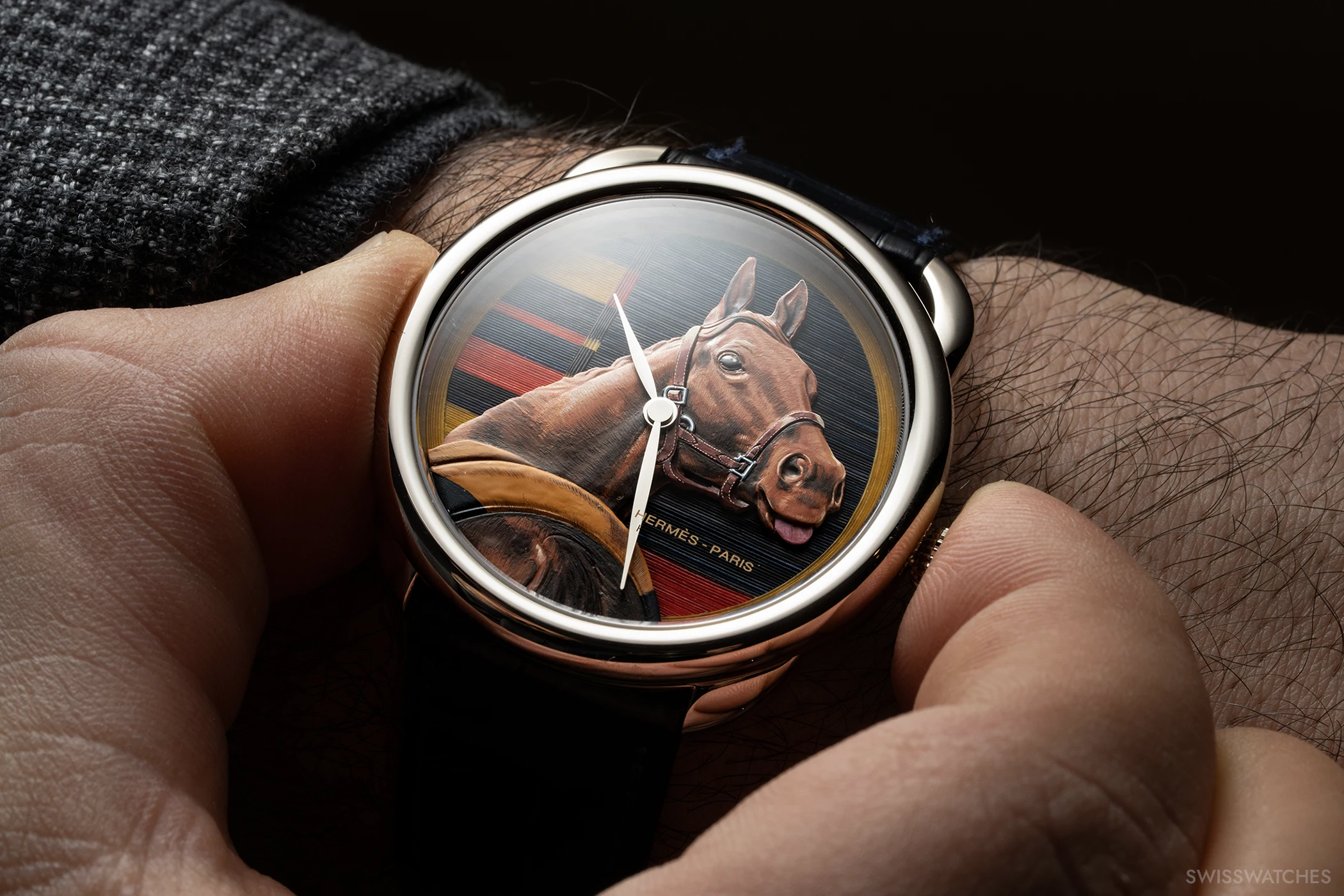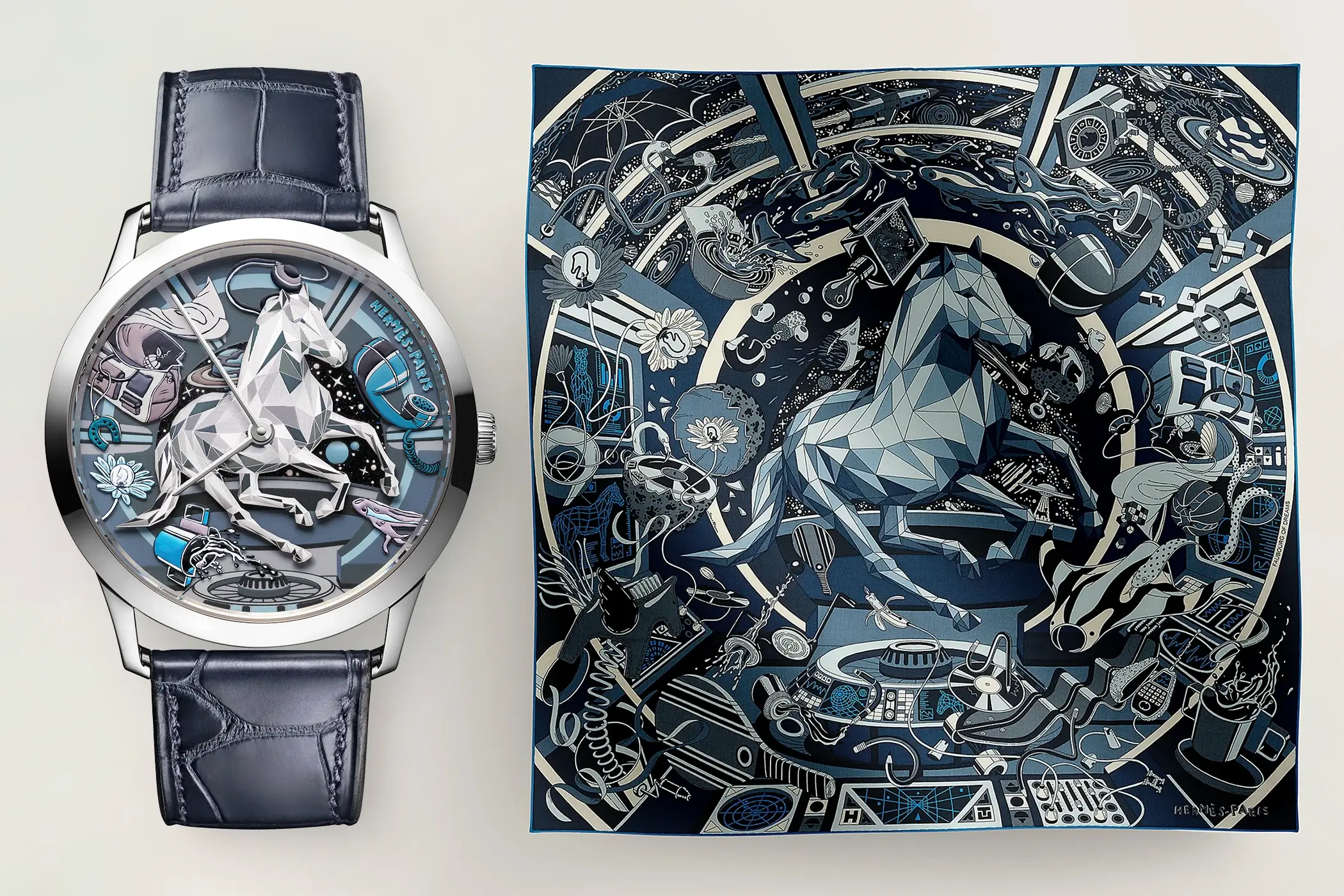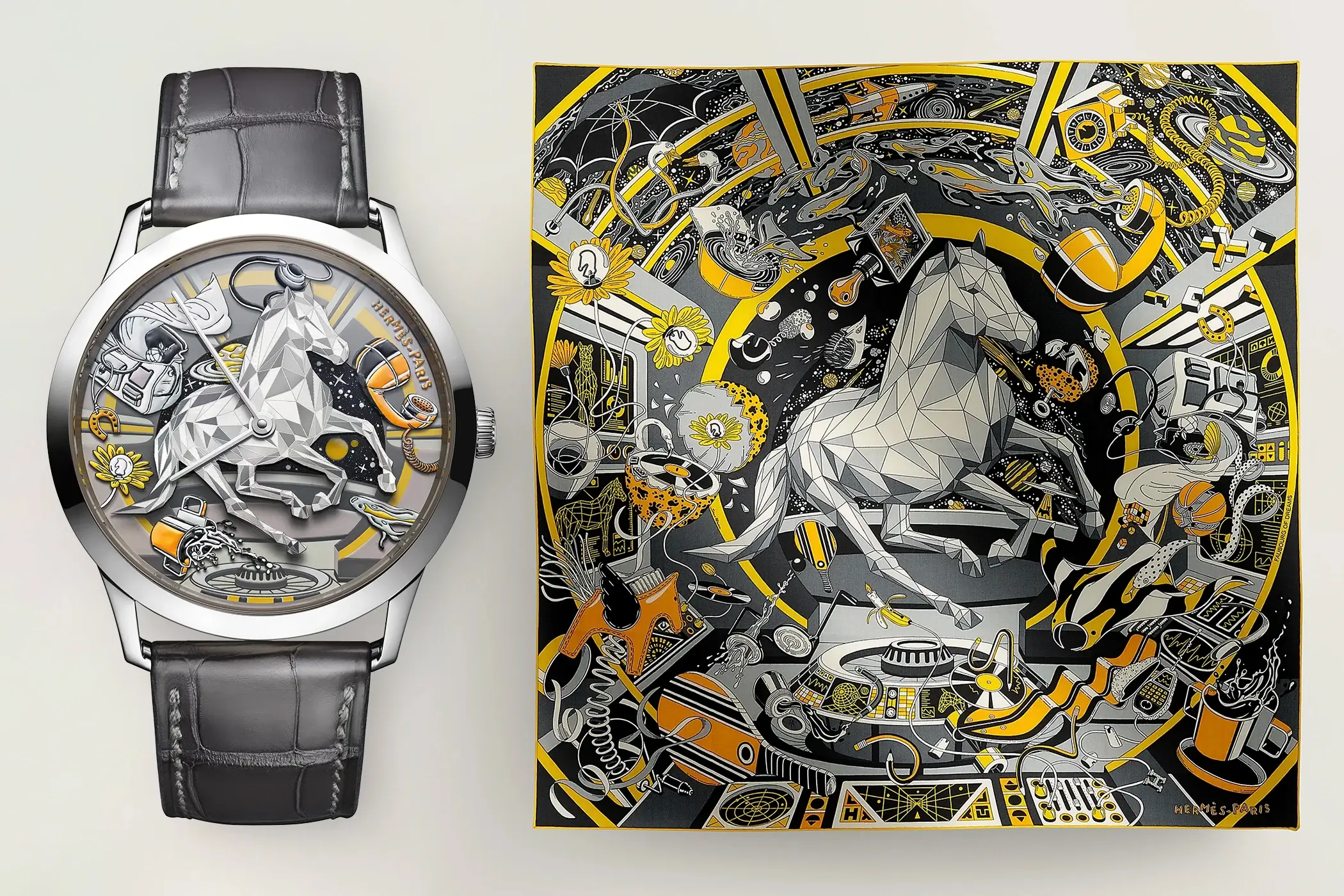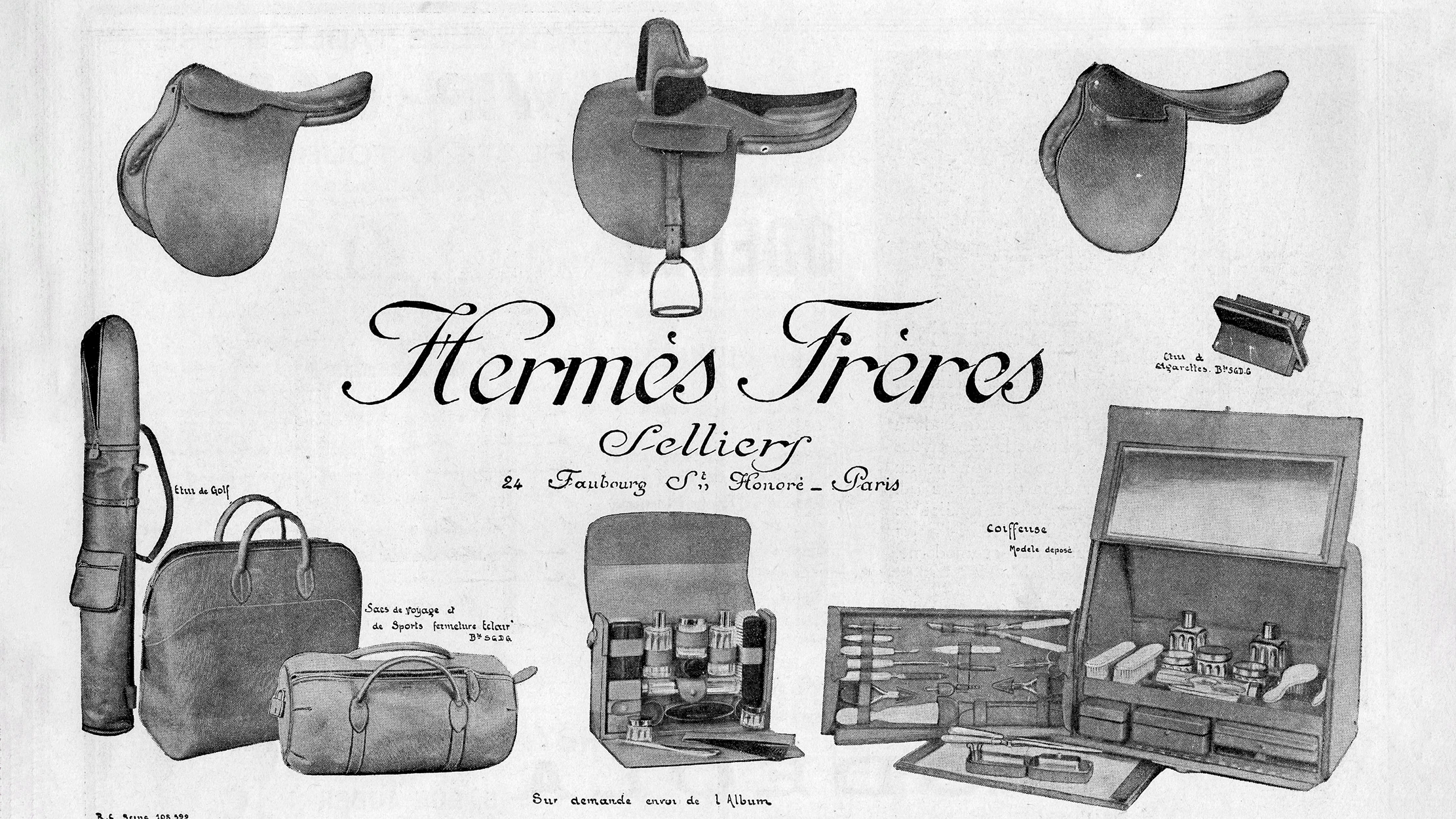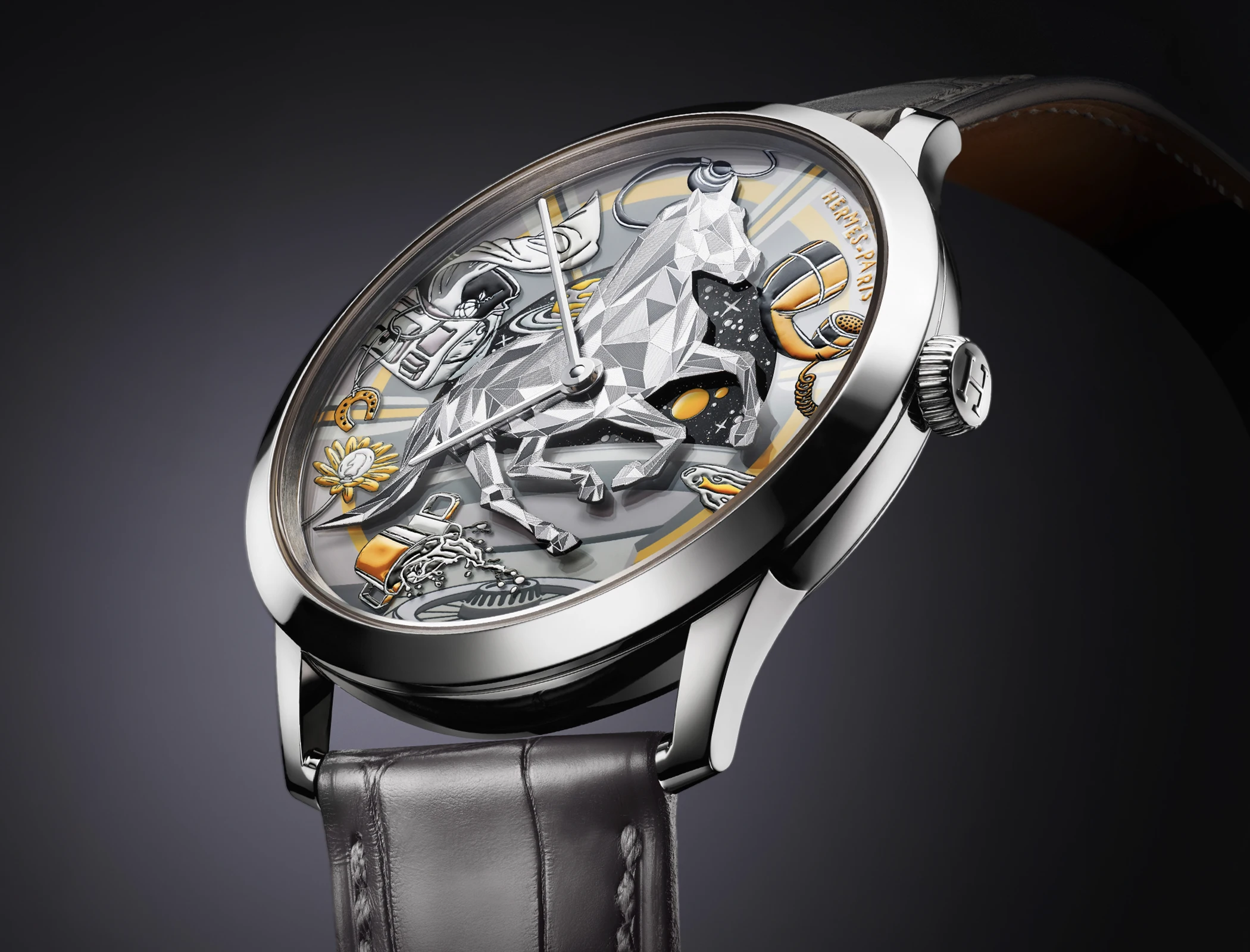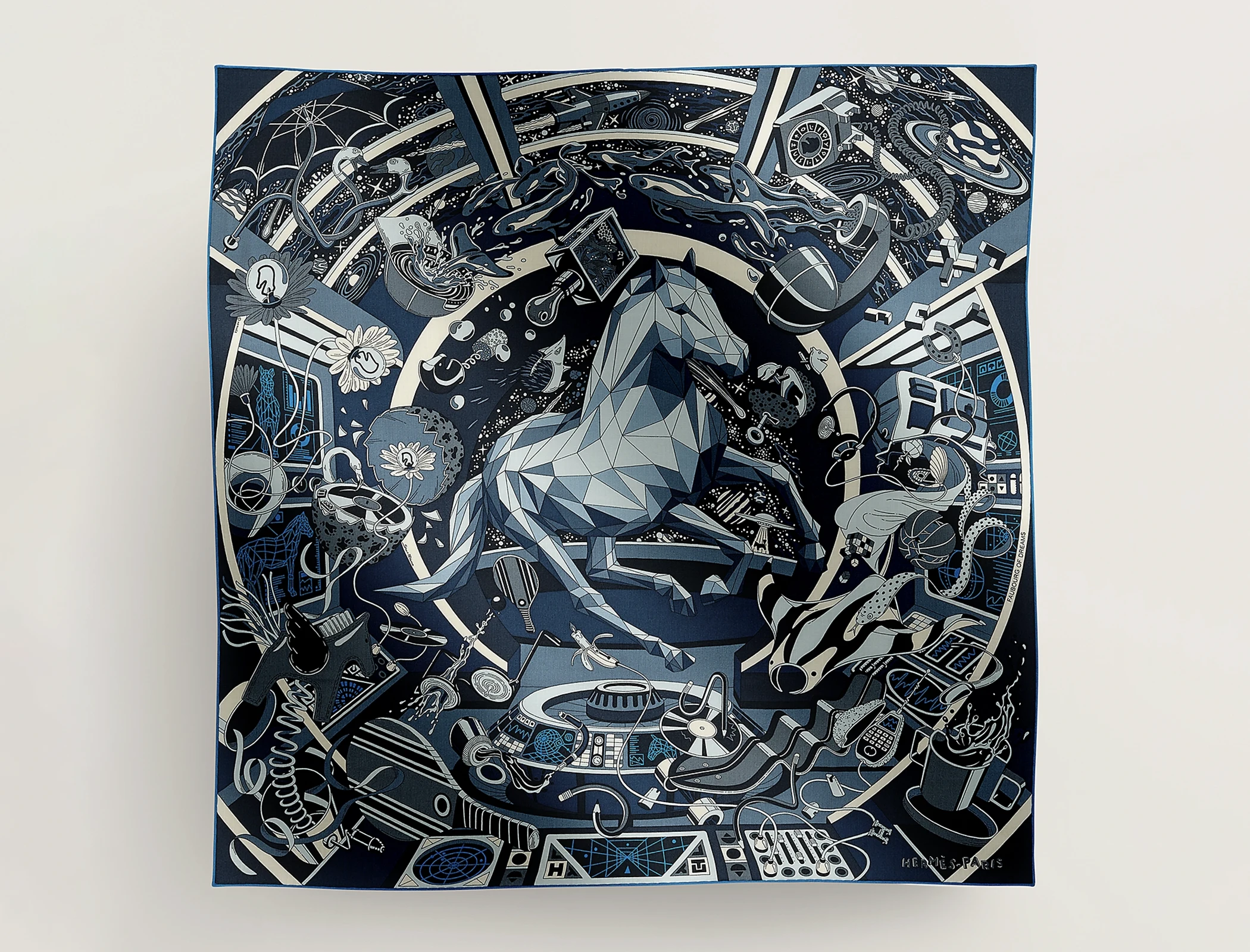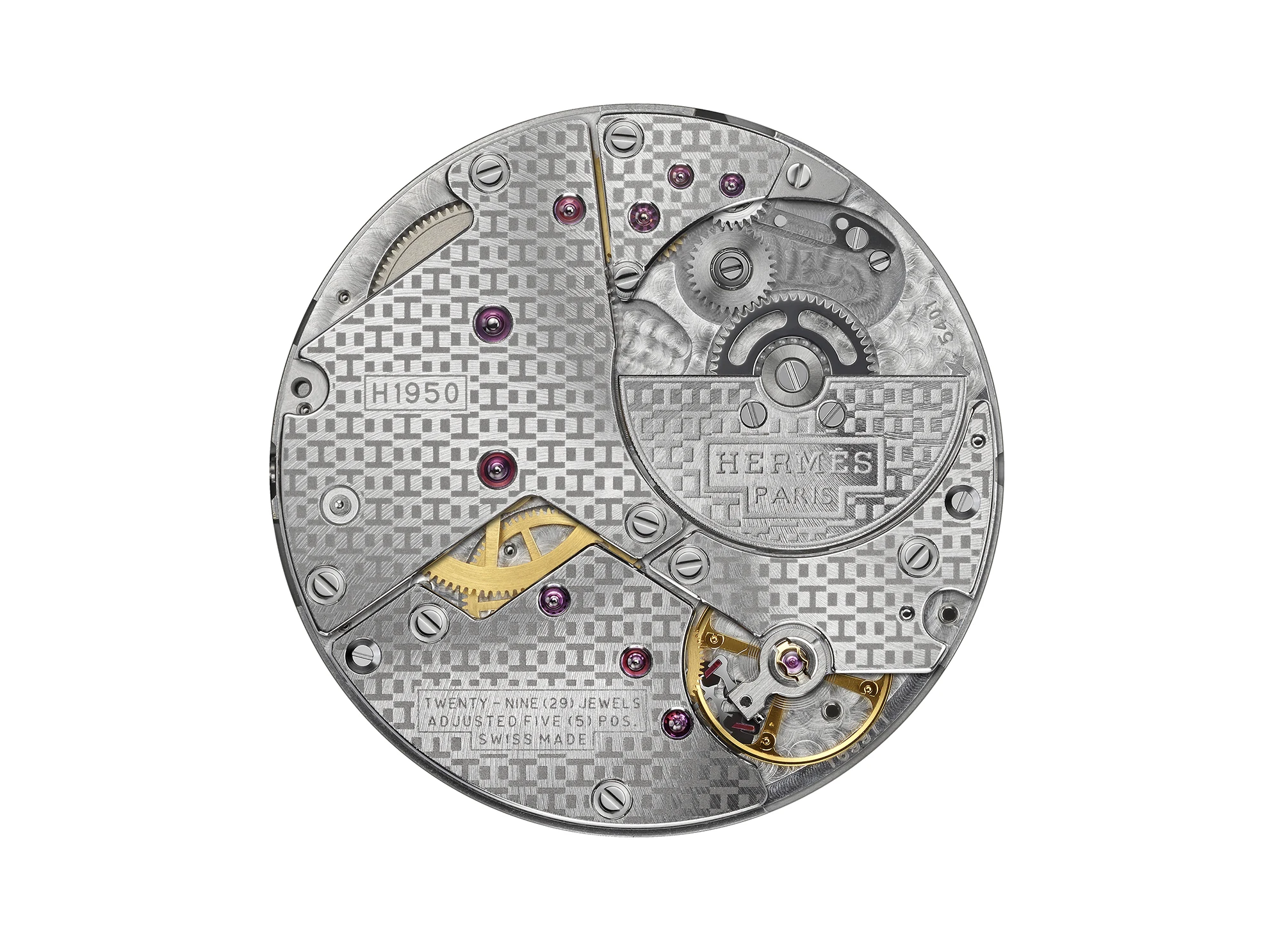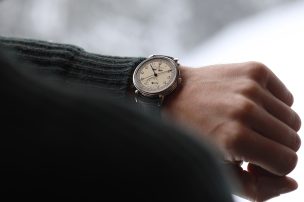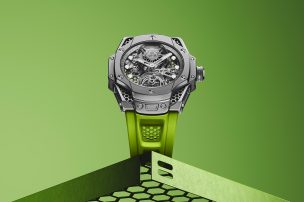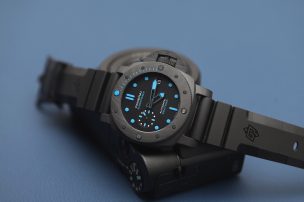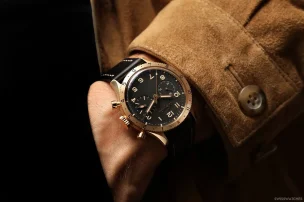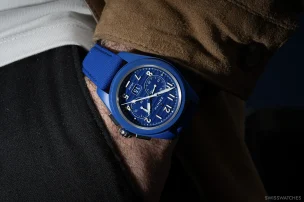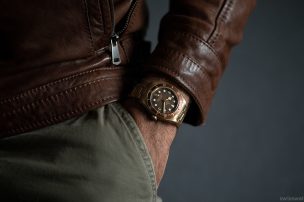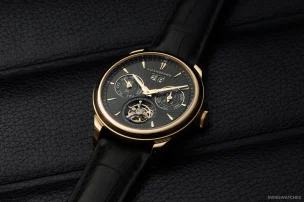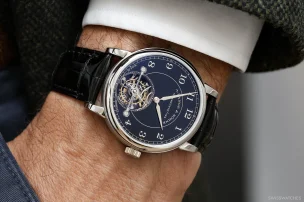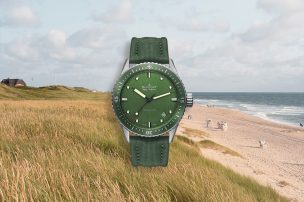
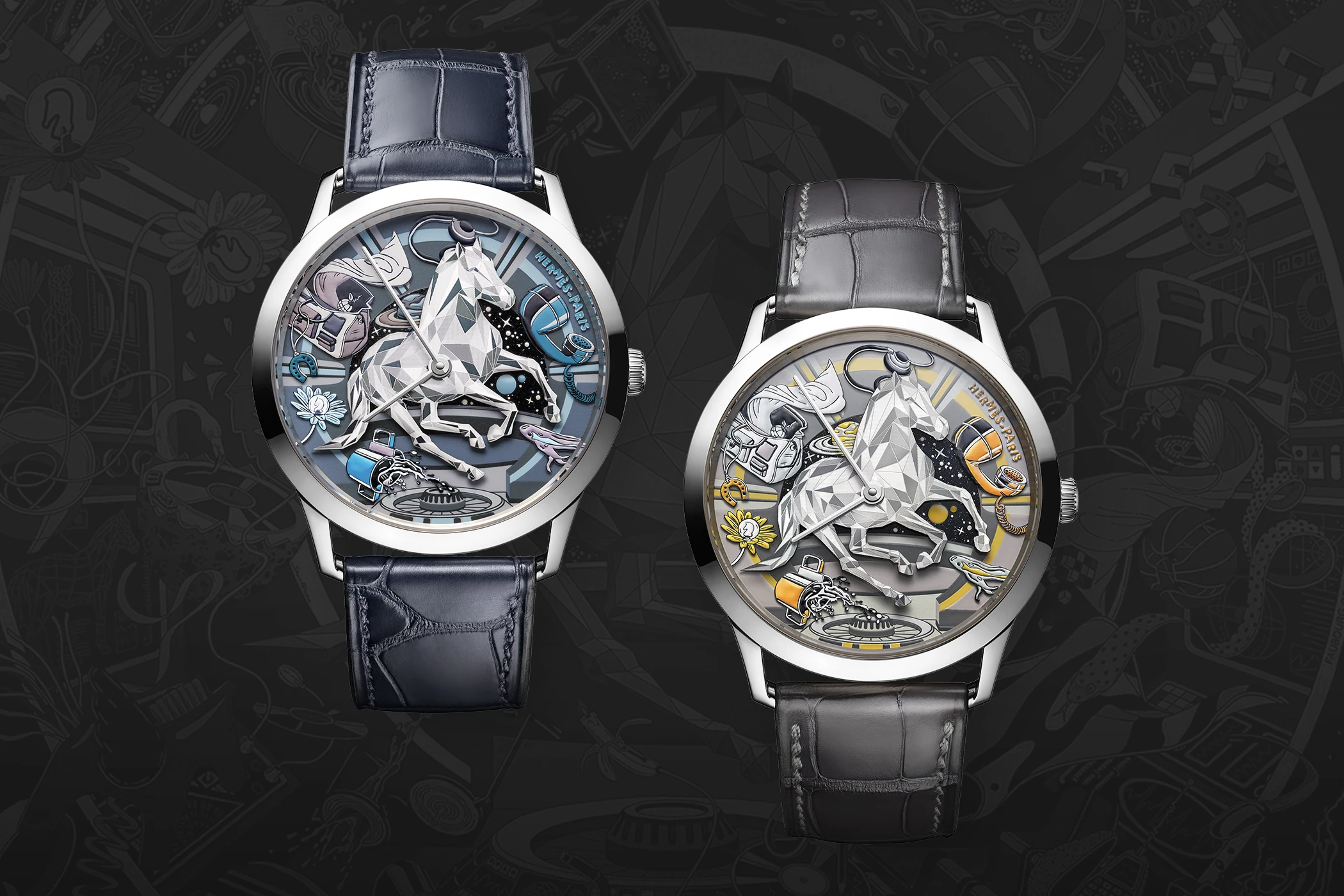
Mechanics in Focus: The New Slim d’Hermès Faubourg of dreams and Hermès’ Journey to Becoming a Watchmaker
With the launch of the new Slim d’Hermès Faubourg of dreams, the watch division of Hermès is once again in the spotlight. On 7 July, Hermès also announced its ongoing commitment to expanding its watchmaking business: Hermès Horloger is increasing its production capacities and, by 2028, will extend its manufacture in Le Noirmont to a total of 11,000 square metres. In future, not only cases and dials will be produced there; around 100 new employees will also be recruited to further strengthen the company’s artisanal and industrial base. Against this backdrop, this article not only examines the latest Slim d’Hermès Faubourg of dreams, but also explores the development of Hermès’ watchmaking business as a whole.
More Than Leather and Silk Carrés: How Hermès Became a Watchmaker
Today, Hermès stands as a brand that, through continuous expansion and a series of strategic acquisitions and takeovers, has established itself as a serious player in the world of mechanical timepieces. Yet, due to its large product families—such as handbags, textiles, saddles, and perfumes—this part of its corporate history is often overlooked. In reality, watch production, or rather the manufacture of watch components, has long been a part of Hermès’ universe: as early as the late 1920s, leather straps for wristwatches were added to its range. Furthermore, the brand entered into collaborations with various watch manufacturers – including Universal Genève, Jaeger-LeCoultre and Vacheron Constantin – to launch joint timepieces. One result of these partnerships was the Ermeto pocket watch, encased in leather and introduced in 1928, which was brought to market in collaboration with the Swiss manufacturer Movado. However, it would be several years before an actual Hermès wristwatch found its way into the product portfolio.
It was not until 1978 that the brand took the bold step of founding its own watch division, La Montre Hermès, in Biel, Switzerland. This marked the first time Hermès produced and marketed watches under its own name. The first model to enter the portfolio was the Arceau, equipped with a quartz movement. Designed by Henri d’Origny, the Arceau features a round case and asymmetrical lugs, reminiscent of stirrups. This inaugural model, which remains part of the collection to this day, was followed by numerous other launches from the 1980s through to the 2000s: the Hermès Clipper, the Cape Cod (which later became famous for its double-wrap ‘Double Tour’ leather strap), and the Heure H with its square, ‘H’-shaped case. Like most early Hermès watches, these models initially featured standard, outsourced quartz movements. As a result, they held little appeal for many watch enthusiasts at first, as they were primarily equipped with quartz calibres.
The Turn Towards Mechanical Watchmaking
The year 2003 marked a turning point for Hermès, heralding the brand’s gradual transition to mechanical watchmaking. That year, Hermès not only conceived its first idea for the Arceau Le temps suspendu—a concept in which the time display appears to pause at the press of a button (the technically sophisticated model would not reach serial production until 2011)—but also launched the Dressage, an elegant men’s watch fitted with a higher-grade automatic manufacture movement from Vaucher.
This laid the foundation for the next significant step towards mechanical calibres: acquiring a stake in the specialist movement manufacturer Vaucher Manufacture Fleurier, which was realised in 2006 with the purchase of a 25 per cent shareholding. This partnership, with a company now majority-owned by the Fondation de Famille Sandoz and known for supplying movements to esteemed brands such as Richard Mille, Corum, and Audemars Piguet, granted Hermès not only long-term access to high-quality mechanical movements, but also the opportunity to participate actively in their development and design. In the same year, Hermès established its own leather workshop at its Swiss watchmaking site, allowing it to produce straps locally.
Consequently, and also in order to position itself as an alternative to the use of quartz movements, Hermès introduced its very first in-house mechanical calibres in 2012, developed in collaboration with Vaucher: the automatic H1837 and H1912 movements. Unlike other watch brands, Hermès took its time with this move—indeed, a full 34 years had passed since the founding of La Montre Hermès.
Strategic Investments and Acquisitions
From then on, Hermès made a series of targeted investments and acquisitions, each reflecting the brand’s determination to strengthen its watchmaking independence and bring key manufacturing processes under its own control. This integration strategy began as early as 2011, with a 32.5 per cent stake in Joseph Erard Holding SA, a Swiss case manufacturer based in Le Noirmont, followed in 2012 by the complete acquisition of dial manufacturer Natéber SA in La Chaux-de-Fonds. Hermès further increased its stake in Joseph Erard Holding SA in 2013, thereby becoming, in effect, the majority shareholder, and since then has overseen both the strategic direction and production of the company. These two firms were gradually integrated into the Hermès structure from 2013 onwards, and, since 2017, have officially traded under the name Les Ateliers d’Hermès Horloger (literally translated as “The Watchmaking Workshops of Hermès”), now consolidated at the Le Noirmont site.
With these three key investments—movements (VMF), cases (Joseph Erard), and dials (Natéber)—Hermès had now brought all critical components under its own control. All that was needed were watches that both made use of these new in-house achievements and boasted a strong sense of identity.
The Slim d’Hermès and Its Development
It is precisely at this point that the Slim d’Hermès, designed in 2015 by Hermès Horloger’s Creative Director Philippe Delhotal, comes into play. As the brand’s first entirely new watch line since the launch of the Cape Cod in 1991, the Slim d’Hermès was conceived to introduce an elegant yet practical timepiece to the Hermès collection.
To achieve this, Hermès focused on two key innovations, both inside and out: Firstly, in collaboration with the Vaucher manufacture, Hermès developed an ultra-thin automatic movement (the H1950 calibre with micro-rotor) specifically for this line. Secondly, the Slim d’Hermès received a distinctive dial design—for a more contemporary aesthetic, Hermès commissioned the renowned Parisian graphic designer and former Louvre Artistic Director (2003–2007), Philippe Apeloig, to create an entirely new, open-worked typeface for the hour numerals. Right from the start, Hermès also presented a perpetual calendar within the Slim collection. This model combined a complete calendar display with a moon phase indication and a second time zone on a sub-dial.
One of the most recent additions to the collection is the Squelette Lune, which for the first time showcases a skeletonised movement in the Slim d’Hermès line. This open architecture reveals the mechanics of the H1953 calibre and integrates a double moon phase, visible at six o’clock.
However, the Slim d’Hermès also offers another facet: the limited special editions. Here, the dial becomes a creative stage for a wide array of motifs. Often, inspiration for the dials is drawn from Hermès’ own silk scarves, with recurring themes such as equestrian motifs and the iconic Parisian boutique at 24 Rue du Faubourg Saint-Honoré.
Credit © Dimitri Rybaltchenko
A case in point is the Hermès Slim d’Hermès Flagship, launched in 2024, which combines an aventurine dial with the depiction of a ship symbolising the boutique at 24 Rue du Faubourg Saint-Honoré. This ship glides across the dial amidst a star-studded sky, designed to evoke a sense of three-dimensionality—a stylistic element that also plays a central role in the new Slim d’Hermès Faubourg of dreams. For this special edition, the inspiration came from a silk scarf created by artist Dimitri Rybaltchenko.
Credit © Dimitri Rybaltchenko
Earlier this year, to mark the 10th anniversary of the Slim d’Hermès, Hermès once again drew on the creativity of Dimitri Rybaltchenko, who designed the Slim d’Hermès Cheval Brossé (“Brushed Horse”). This 24-piece limited edition features an azure-blue enamel dial, upon which an abstract horse motif in vivid colours has been applied using pad printing. Rybaltchenko, who represents the second generation of his family to design for Hermès Carrés—his father Vladimir and great-uncle Philippe Ledoux previously worked for the Parisian house—was also the inspiration behind this year’s Watches and Wonders highlight, the Hermès Arceau Rocabar de Rire, based on the eponymous silk scarf and featuring a playful illustration of a horse sticking out its tongue, brought vividly to life on the watch.
The New Slim d’Hermès Faubourg of dreams
Once again, Hermès has drawn inspiration from its iconic silk scarves to launch its latest special edition: the Slim d’Hermès Faubourg of dreams. The dial of this new timepiece is an interpretation of the “Faubourg of dreams” scarf. In a design by Stuart Patience, the Parisian Hermès boutique at 24 Rue du Faubourg Saint-Honoré is transformed into a space capsule journeying through the cosmos. The dial thus presents a small section of the silk carré, embracing the same theme—with the horse, too, positioned as the focal point at the centre of the scene. In this way, the horse is stylised as the nucleus of the brand’s history, surrounded by further illustrations by Stuart Patience, drifting through the air—including a nod to the Haut à Courroies, the first bag ever made by the maison.
The Significance of 24 Rue du Faubourg Saint-Honoré
But why is 24 Rue du Faubourg Saint-Honoré, portrayed as a space capsule on the new Slim d’Hermès Faubourg of dreams, of such importance to Hermès? The answer lies in the brand’s own history, which began with its founder, Thierry Hermès. Born in Krefeld, in the Lower Rhine, Thierry Hermès undertook an apprenticeship as a saddler—a craft that would profoundly shape the destiny of his future brand. After marrying Christine Piérart, who was born in Düsseldorf, Hermès moved in 1828 to Pont-Audemer, northwest of Paris, then considered the “leather capital” of the era, to perfect his trade. In 1837, he opened his first shop in Paris near the Madeleine, securing well-located, affordable premises. The business produced high-quality harnesses and bridles, and, from 1867 onwards, also saddles for horses—products still offered today.
Under the leadership of Thierry’s son, Charles-Émile Hermès (1835–1919), who took over after his father’s death in 1878, the range was expanded in the early 1890s to include high-end trunks and leather bags—a response to the rise of railways and motor vehicles, which gradually replaced horse-drawn carriages. In 1880, following years of urban redevelopment in Paris by Georges-Eugène Haussmann, Hermès moved to the elegant 24 Rue du Faubourg Saint-Honoré. Since then, this address has been the company’s headquarters, and what followed is now legend: today, the address is not only the epicentre of the Hermès universe, but also the very place where many of the house’s most iconic products—including the silk carré, the Kelly Bag, and the Birkin Bag—have been conceived or unveiled to the public for the very first time. It is precisely for this reason that the boutique serves as an inexhaustible source of inspiration, adorning countless products and motifs from the maison.
The Dial of the New Slim d’Hermès Faubourg of dreams
The dial of the Slim d’Hermès Faubourg of dreams, with its subtle Hermès references, not only recalls aspects of the maison’s product universe but, through the implied rotation of its elements, also evokes the sensation of floating in a space capsule. This impression is reinforced by details such as a scarf drifting out of the Haut à Courroies, a horseshoe dangling below, a cup pouring water, and a telephone receiver—which, shown in the foreground in greater scale, appears to float in zero gravity. At the centre of the dial is a large horse, positioned as the key element reflecting the brand’s identity. It displays a range of grey tones, achieved through an engraving technique based on careful abrasion. The chest of the horse forms the starting point for the baton-shaped hour and minute hands. To give the other dial elements, set on a sapphire glass ring, a sense of depth, two essential artisanal techniques have been employed: miniature painting and appliqué engraving.
The background—designed as a space capsule to enhance the spatial effect of the dial—features a semicircular aperture that brings back the recurring motif of outer space. This cosmic landscape has been created on a base of aventurine flecked with gold leaf, upon which stars, and depending on the version, either yellow or blue planets have been painted by hand.
The Movement and Case of the Slim d’Hermès Faubourg of dreams
At the heart of the Slim d’Hermès Faubourg of dreams lies the Hermès manufacture calibre H1950, offering a power reserve of 48 hours and operating at a frequency of 21,600 vibrations per hour (3 Hz). This movement is based on the calibre VMF 5401, an automatic movement with an exceptionally slim height of just 2.60 mm, achieved through the integration of a micro-rotor. The base calibre also serves as the foundation for movements such as the Parmigiani Fleurier calibre PF701. To provide the dial with an elegant frame, the special edition is housed in a white gold case measuring 39.5 mm in diameter and offering a water resistance of 3 bar (30 metres).
Price and Availability of the New Slim d’Hermès Faubourg of dreams
The Slim d’Hermès Faubourg of dreams is presented on an alligator leather strap and is available in two versions—one with blue accents, the other with orange accents on the dial—with each limited to just 24 pieces. The price of this exclusive timepiece is €92,000.
